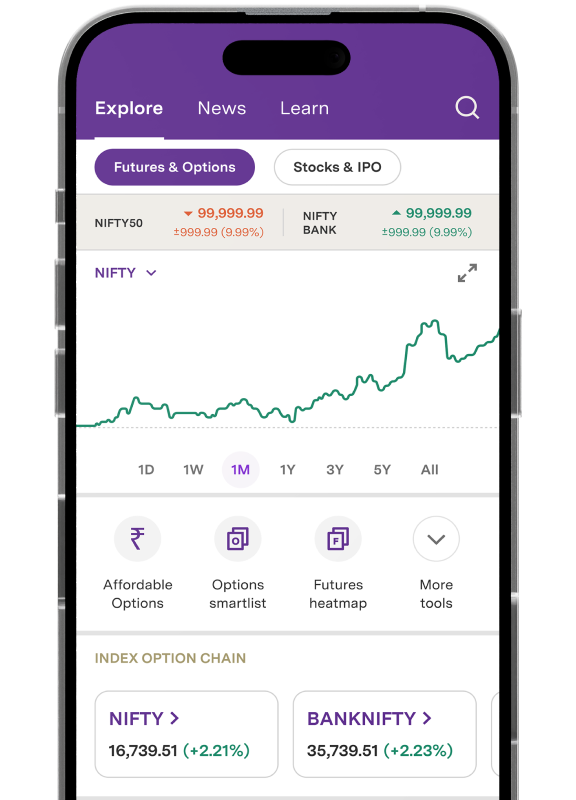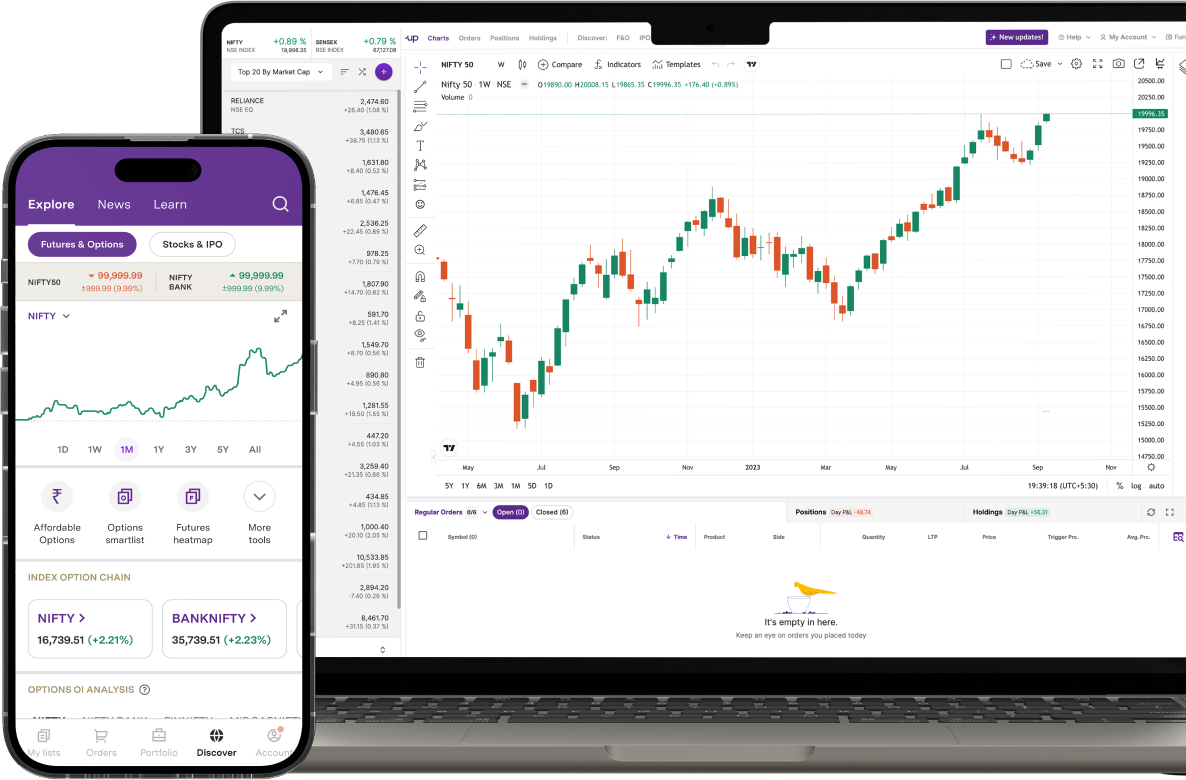
Follow our courses
Self-study guide to Option Trading along with quizzes
AMC & commissions* on Mutual Funds and IPO
Per order on Equity, F&O, Commodity and Currency

Average
App Rating
Backed by
Ratan Tata
Loved & Trusted
by Indians
The only platform you'll need for all your trading needs.
OI analysis
Order Slicing
Option Greeks
Price Alerts
Simplified Ledger
Smartlists
After-Market-Orders
Funds breakdown
Position Analysis
Affordable Options
Heatmap
Global Indices
FII/DII activity
Demat + Trading
Mutual Funds and IPOs
Account Maintenance Charges
Equity, F&O, Commodity and Currency orders
*Zero AMC Is Applicable For Customers Onboarded After August 2021
UpSkill with us - we cover topics for beginners and pro traders.